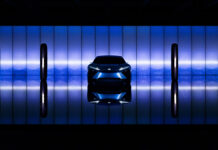The Same BMW 5 Series, But Quite Different
BMW Lovingly Redesigns Its Flagship i5 for The Electric Age.
And it’s spectacular.
Slow but sure. While the German automaker has taken its time bringing its EVs to market — turns out it was time well spent. The i5 electric, in short, is a magnificent vehicle that just happens to be electric. After all the i5 is at the pinnacle of performance-oriented machines, and it delivers everything you’d expect from the ‘ultimate driving machine.” BMW took the time to re-engineer the i5’s handling and overall performance, no small feat with a heavier overall weight and redesigned powertrain. BMW’s design offsets the battery’s weight by utilizing its stiffness as a chassis component, helping to improve weight transfer and better control body motion. BMW has also added a special rear axle air suspension that also aids in keeping the car flat and remarkably stable over rough surfaces. Design considerations absent in other EVs.
Two i5 models will be offered, starting with the 335-hp eDrive40, which drives the rear wheels via a single electric motor. A hotter M60 xDrive model adds a second electric motor on the front axle for a combined 590 hp. BMW promises the sedan will feature elegant, agile handling, super-solid cornering grip, and muscular dual-motor powertrain. BMW says the 590 hp powertrains can blast the i5 to 62 mph in just 3.9 seconds. M60 models also come with active anti-roll bars, a sporty suspension tune, wider tires, and rear-wheel steering, which are all intended to give the car a more athletic feel.
The battery pack’s power will deliver the i4 EV’s 83.9 kWh capacity, and BMW expects max range to be around 295 miles to a charge. The range is enhanced thanks in part to improved airflow around the wheels and a drag coefficient of 0.23. BMW is also introducing a new feature on the i5 called MaxRange mode, which will help the driver who is close to running out of range eke out the last few electrons possible to limp to a charger.
Another breakthrough for the engineers at BMW — the i5 EV’s brakes — rated among the best—if not the best—EV braking system. They are true to more traditional braking systems on non-EV cars. BMW Senior Vice President of Driving Experience Nicolai Martin, made a point to mention how much time and effort the team expended making the car’s hydraulic brake-by-wire system. “We especially invested additional effort in the 5 Series specific application,” Martin said. It showed when we slowed.
We expected elite levels of technology in the i5 EV and weren’t disappointed, and it’s the one area where the EV version of the i5 slips past the ICE version. Bravo to BMW’s lane keeping feature, using a full-range radar array and an 8-megapixel camera located in the rear view mirror area, among other sensors placed around the car, up against any on the market. And unlike Cadillac’s SuperCruise, BMW’s hands-free driver assist is available for use on any freeway at any time, anywhere, not just what’s been mapped.
Okay, we saved this for — almost –last. The i5 has the ability to perform an automated lane change just by looking to the rearview mirror. No joke. If the system detects you’re free to change lanes and prompts you, all you need to do is look to your left or right and it will change lanes. Seriously.
BMW’s slow, methodical approach to the engineering and development of its EVs moves the brand gracefully into the electric era. To be sure, whatever powers its vehicles, BMW is enhancing its brand and enlarging its reputation.















